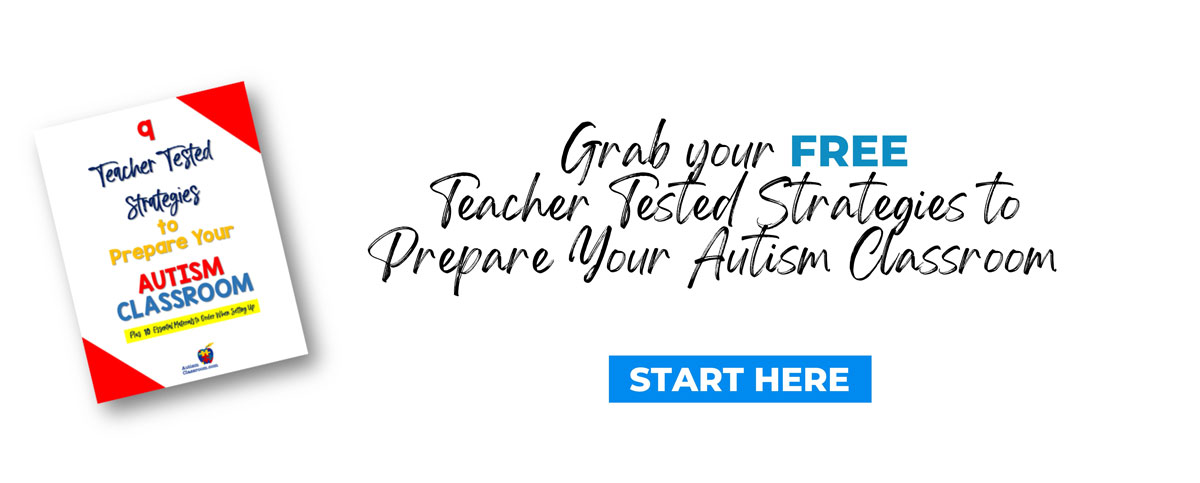
Before we get into the cold weather sensory worksheets, let’s talk about this a bit. That student you have who never likes to touch a pencil, doesn’t want to pick up the slime, or fights when asked to wash their hands is clearly showing some sensory differences when it comes to responding to sensory input. And, as much as you have on your plate, be ready to tackle this too. Helping reluctant writers with tactile defensiveness can be challenging, but you may have to think outside of the pencil box on this one.
Here are some tips to support students who appear resistant to touching things in your special education classroom:
1. Start with Sensory Exposure/Integration
Desensitize the hands before writing by intentionally incorporating a few sensory activities each week. I can remember using therapy putty to let students interact with before writing. Some days we would use playdough, a textured sensory, and lotion to “warm up” their hands for the fine motor activity. The warm-up lasted about 3-4 minutes. For us, it was an effort to provide controlled, positive tactile experiences.
2. Consider Alternative Writing Tools
Some students with tactile defensiveness may be more comfortable using different writing tools. Larger, softer pencils, pencil grips, or markers can be used. I loved finger crayons and block crayons which were extra-large but offered students a better grip.
3. Incorporate Gross Motor Activities
Depending on the student and your number of staff members, have students engage in gross motor activities like pushing a wall, heavy lifting, or jumping before writing. For some students with autism, sensory activities like this can help regulate their sensory systems.
4. Gradual Exposure
Slowly introduce writing in small, manageable steps. Start with short, low-pressure tasks like tracing, drawing, or writing with finger paint to gradually build tolerance for the writing process.
5. A Little at a Time
You must make this work without overwhelming them. For especially sensitive students, you are going to begin with tactile alternatives to traditional writing. What does this look like? This looks like intentionally planning activities like using finger tracing in the sand, shaving cream, or on a sensory board. This allows them to engage in letter formation without holding a pencil.
6. Provide Comforting Sensory Input
Nobody works well when they are upset. Try to get the students regulated before the writing time. For a few students with autism, sensory activities like offering calming sensory tools such as weighted lap pads, or fidget toys might help them.
7. Build Fine Motor Strength
Incorporate fine motor activities that build hand strength like threading large beads, squeezing stress balls, or using clothespins. Strengthening hand muscles can improve writing ability and reduce the sensory discomfort associated with writing tasks.
8. Plan activities that incorporate sensory activities and sensory exploration.
If you never have to use your hands, you probably don’t ever want to use your hands! Let’s get those little fingers exploring sensory activities more often. Not too many worksheets incorporate sensory activities in the lesson, but I made some that do!!! Now, if you are looking for sensory ideas for the winter, take a look at these.
With the cold weather coming, who would not want fun activities to keep your little ones engaged during chilly winter days? The Wrecked Printable Winter Set will get them involved in the lesson. Pop off those mittens, grab scissors and glue, and leave perfection out in the cold. These sensory worksheets were made to get messy! You’ll love the learning and language development that occurs, and they’ll have a blast getting in the mess.
You will guide a sensory activity with these winter printables. Most days, you will end up with your students’ worksheets covered in a fun sensory experience. Feel free to put your own spin on them! Doctor them up and incorporate additional materials because these are just a foundation to get you started. Each page has communication images to spark discussion about the activity.
The most important part is that the activities are linked to the Common Core Speaking and Listening Standards for grade 1 (some for kindergarten) to increase communication during the sensory activity.
Work on other skills too with this winter set! It includes 25 worksheets that are designed to get your kiddos using all their senses through fun sensory interactions. They’ll put on their good listening ears to follow directions (we hope) and get their pointer finger ready by working on fine motor skills as they communicate and make a strategically organized and teacher-directed mess. (Smile.)
And, since the sensory worksheets are aligned with the 1st grade and some Kindergarten Common Core Speaking and Listening Standards, you can use them for ELA too. Each standard is posted on the worksheet, which makes them sensory activities that autism teachers can align with ease. This is also a great feature when administration pops in looking for posted standards around the room.
See the worksheets here.
The highlights of this winter set are:
- Numbers
- Words
- Everyday classroom materials used
- Common Core Speaking and Listening Standards
These are also a useful lesson activity to put in your Sub Tub for those days when you might be feeling under the weather and are not in class. They can easily pull them out, gather the materials needed, and teach! This set is easily paired with science lessons or if you do not have a science curriculum and just want a fun, quick activity.
You can work on building your students’ tolerance for tactile input and increase their ability to manipulate writing tools as well as improve communication skills. You have the tools now!
Want some other tools to support your classsroom?
Click the yellow box below for autism educator tips.






